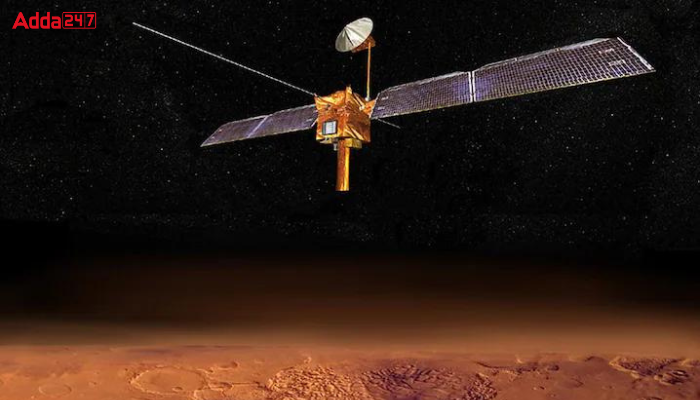Mars Orbiter Mission: Mangalyaan, the Indian Mars Orbiter Craft runs out of fuel and battery after completing 8 years. Mangalyaan was a huge achievement for the Indian Space Research Organization. It helped to study the Martian landscape including surface geology, morphology, atmospheric processes, surface temperature, and atmospheric escape process.
Mangalyaan used five major instruments to study geology and morphology. These five instruments included Mars Color Camera (MCC), Thermal Infrared Imaging Spectrometer (TIS), Methane Sensor for Mars (MSM), Mars Exospheric Neutral Competition Analyser (MENCA), and Lyman Alpha Photometer (LAP).
Mars Orbiter Mission: About
The Mars Orbiter Mission (MOM) is also known as Mangalyaan. It was a space probe orbiting Mars on 24th September 2014. The Indian Space Research Organization launched the MOM on 5th November 2013. It is India’s first interplanetary mission and the fourth space agency to achieve Mars orbit. India became the first Asian nation to reach Martian orbit and the first nation in the world to reach Mars on a Maiden attempt.
The Mars Orbiter Mission probe was launched from the first launch pad at Satish Dhawan Space Centre, Andhra Pradesh using Polar Satellite Launch Vehicle (PSLV) rocket C25 at 9:08 UTC on 5th November 2013. The launch window was approximately 20 days long and started on 28th October 2013.
Mars Orbiter Mission: History
The first public acknowledgment of the mission to Mars was announced by the then-ISRO chairman G. Madhavan Nair on 23rd November 2008. ISRO planned to launch the MOM on 28th October 2013, however, it was postponed to 5th November following the delay in ISRO’s spacecraft tracking ships to take up pre-determined positions due to poor weather in the Pacific Ocean. On 5th August 2013, assembly of the PSLV-XL launch vehicle designated C25 started. The assembling of five scientific instruments was completed at the Indian Space Research Organization Satellite Centre, Bengaluru. The finished spacecraft was shipped to Sriharikota on 2nd October 2013 for Integration into the PSLV-XL launch vehicle.
Mars Orbiter Mission: Objectives
The primary objective of the Mars Orbiter Mission was to develop the technologies required for designing, planning, management, and operations of an interplanetary mission. The secondary objective is to explore Mar’s surface feature, morphology, mineralogy, and Martian Atmosphere using Indigenous scientific instruments. The major objective of the Mars Orbiter Mission was as follows.
- Orbit maneuvers to transfer the spacecraft from Earth-centred orbit to heliocentric trajectory and finally, captured into Martian orbit.
- Development of force models and algorithms for orbit and attitude computations and analysis.
- Navigation in all phases
- Maintaining the spacecraft in all phases of the mission.
- Meeting power, communication, thermal, and payload operation requirements.
- Incorporate autonomous features to handle contingency situations.




 Haryana Assembly Passes Resolution to Co...
Haryana Assembly Passes Resolution to Co...
 Which Country is Known as the Land of Ch...
Which Country is Known as the Land of Ch...
 Operation Hawkeye: US and Jordan Strike ...
Operation Hawkeye: US and Jordan Strike ...







